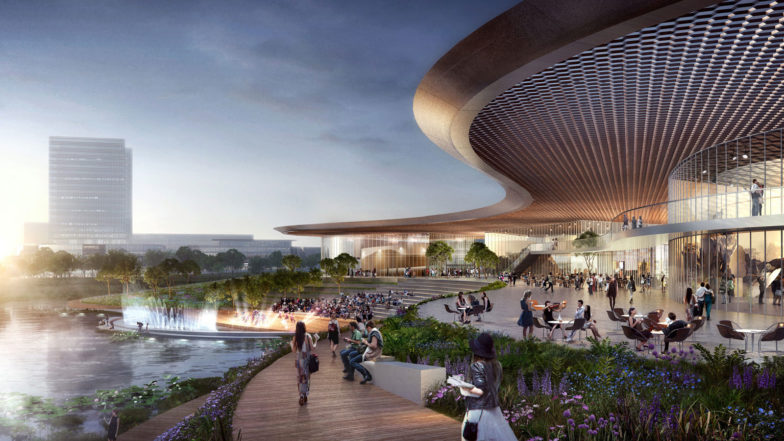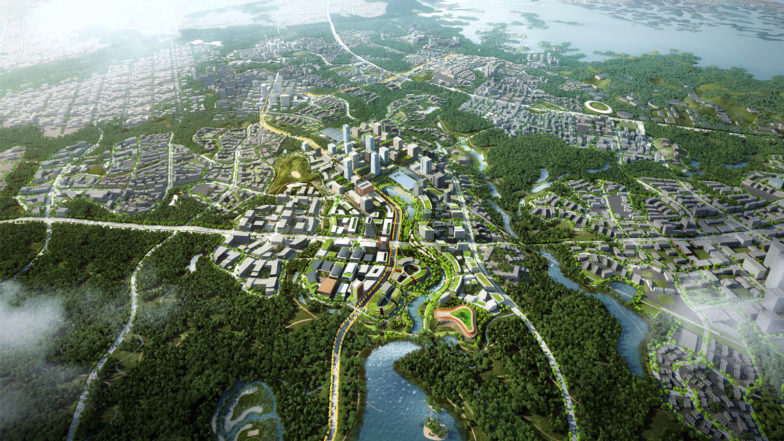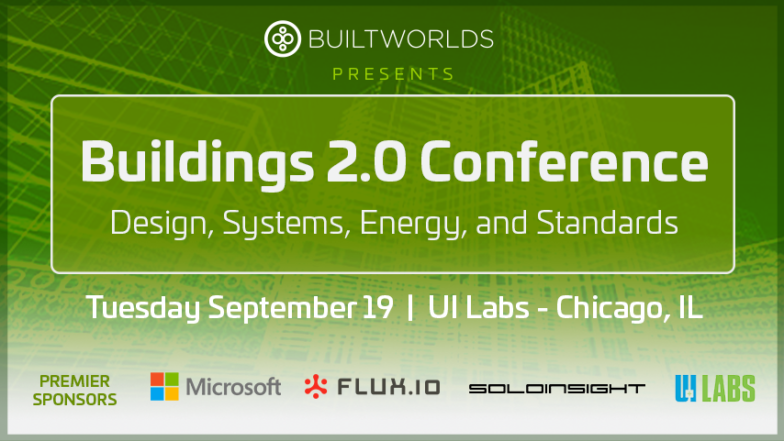Weren’t able to make it to the Cities Conference? We’ve got the top 5 takeaways from the event. This is Part 2, with Takeaways 4 and 5. Did you miss Part 1 of the takeaways? Click here to read it.

Takeaway #4: Leveraging nature is a financial imperative.
Technology did make way for Mother Nature in a panel presentation on the “ecology of a city.” Phil Enquist, who is a partner at Skidmore, Owings, & Merrill, spoke of “partnering with nature.” This partnership of cities and nature will become ever more important, Enquist noted, as by the year 2024 the planet’s human population will be 8 billion. “We’ve never fed 8 billion people before,” he said.

Enquist was joined by Drew Wensley, CEO of Moriyama & Teshima Planners, and Meiring Beyers of Klimaat Consulting & Innovation Inc. The three showed how, in their design work, they seek to support the built environment by leveraging natural systems, using nature’s power to filter and recycle, to break down what Enquist called the “linear” systems of industrial society and replace these with natural cycles.
Wensley presented an impressive project that turns to nature’s power to clean and conserve water in the Middle East. Working in Saudi Arabia with the Riyadh Development Authority, he began work in 2001 to restore Wadi Hanifeh, a 120-kilometer long oasis, using a systems approach to build a bioremediation facility. Describing its workings, he showed a pyramid of organic processes leading to a fish, a tilapia that now provides important nutritional resources.
The project, which has become an important recreational feature in Riyadh, exemplifies what these designers see as the next generation of urban infrastructure, one that improves the environment and engages people. It shows how, for them, the natural environment is the baseline for everything.
This basic principle also appeared in work on a London Hackathon, which focused on principles of human movement to reconsider large vehicle flow in central London. The hackathon led to a recommendation to “de-traffic” the central part of the city and give it back to people on foot.

Beyers presented his work from Chengdu in China, which studied the constraints of the existing built environment and sought natural wind patterns to improve air quality. He modeled how wind could be stagnated but also freed by urban form, and mapped main corridors divided into smaller corridors with pocket parks to further enhance wind movement.
Enquist clarified the close relationship of natural systems and urban ones by succinctly stating his belief that “we cannot get to sustainability without density.” He advised BuiltWorlds to pursue a third conference topic, adding ecology to its focuses on cities and buildings. He noted how partnering with natural systems is basically a financial imperative, that cities and nations will save money by achieving critical densities and building infrastructure that leverages natural systems.
His final image showed the great “heartland watershed” draining into a “dead zone” in the Gulf of Mexico. It’s a massive example of the harm caused by our linear system of food production, he said. Instead, we must find ways to “equate waste with food” and build on natural cycles to maximize renewable income.
Takeaway #5: The key to financing city-scale projects is national support — and a good plan.
You can’t have a conference on Cities without talking about the struggle of financing those projects. Dr. Suzet McKinney, CEO of the Illinois Medical District, framed the financial discussion with a presentation about planning for that district. As one of the earliest and most successful innovation districts in the US, it is a useful model for what special districts can achieve.

McKinney joined a panel of three other financial luminaries, including Sam Sax, a long-serving board member of the Chicago Public Building Commission, Joshua Rogers who is CEO of Arête Wealth in Chicago, and David Bowcott who is Global Director of Growth, Innovation & Insight at Aon.
Their conversation ranged over the broad topic of financing and building the next generation of cities. Sax shared political insights gleaned from his long years on the board of a commission that’s helped Chicago create its modern built environment beginning with the Civic Center in the mid-’60s.
McKinney talked practically about convincing investors by “getting sh*t done!” But all of the discussion revolved around how to create the proper incentives to allow private capital to form and take risk.

Bowcott discussed the important role of public-private partnerships, drawing upon his experience in the insurance business and his earlier work in Canada, where excellent P3 procurement, documentation and project pipelines have been established by public organizations such as Infrastructure Ontario. Rogers, who has deep experience in investing in alternative energy projects, offered the insight that the basic use of infrastructure is to attract human talent, which is what moves the urban economy today.
All speakers acknowledged the importance of planning to ensure intelligent deployment of finance. In fact, said McKinney, “planning” is the wrong word; it’s about how to get the money. Bowcott said there’s plenty of money out there, and all required infrastructure could be built with private money if the appropriate risk legislation were in place.
Still, Sax stated, you need a plan, a good regional plan, or the result will be what he called the “Florida curve” of boom and bust cycles. All expressed concern that the lack of national guidance for good regional and mega-regional planning in the United States will hinder the country’s progress toward a new urban nexus encompassing nature, technology, finance and design
By the end of the conference a new lexicon describing cities had appeared. Phrases such as “physical internet,” “sense of respect” for public transit, and “partnering with nature” seemed to be describing a new paradigm. These concepts, put into effect by good planning, will surely shape the 21st century city for the benefit of many.
Did you miss the Cities Conference? Don’t miss our Buildings 2.0 Conference on September 19!
About the author
Alan Mammoser is a journalist who writes about cities, environment, energy, infrastructure and planning. He also writes the blog WarmEarth.



Discussion
Be the first to leave a comment.
You must be a member of the BuiltWorlds community to join the discussion.